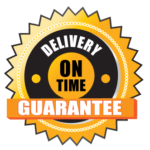REDWOOD LOGIN
Redwood PortalLTL
SCS
SCS Support
Rockfarm
At LTX we are in constant communication with shippers and manufacturers aiming to improve their knowledge of their less than truckload (LTL) freight business. LTL is a complex shipping solution with several benefits, as well as a few downsides. In this article, we discuss the advantages and disadvantages of LTL shipping.

A major advantage to LTL shipping is the pricing structure. With LTL, you pay for the space you use and not an entire trailer. This allows companies who may not produce enough product to fill an entire trailer the ability to ship their product to the end user at a significantly lower cost.
We recently completed a shipping analysis for a customer where we compared their full truckload (FTL) prices to LTL prices. We found multiple instances where they paid a FTL carrier to move a shipment using only 12% of the trailer. The FTL rate was $2,100, whereas LTL would cost approximately $500, offering a 76% savings on one lane.
All manufacturers face the same dilemma: How do you effectively utilize your space in order to improve your bottom line? Since space is typically a fixed amount and obtaining more increases cost and decreases margins, LTL offers a great benefit to those who aim to use more of their space for production rather than consume it by having to store finished goods.

Consider an example of one of our larger customers. They own over six hundred thousand square feet of warehouse space. Strategically, they have decided to invest their resources into furthering production lines. As a result, 98% of their space is dedicated to manufacturing their product. That leaves 2% of space to store, prepare, and ship their finished goods to their customers. Without the use of LTL, they would have to purchase more warehouse space to stage and ship their product.
Within the last five years, the LTL industry has done a great job to improving processes and develop efficiency solutions using technology advancements. Through developments in Application Programming Interface (API) and Electronic Data Interchange (EDI), LTL operations have become streamlined and offer workflow automation enhancements for shippers and third party providers. Tasks such as automated pick-up requests, advanced tracking notifications, API quoting, document retrieval, and batch invoicing have all drastically improved end user experience.

LTL offers competitive transit times regionally and nationally. Typically, regional carriers can meet the majority of their direct points within two transit days. National carriers can consistently reach direct points within four to five transit days. Good LTL carriers meet an on-time percentage of 98% or higher.
LTL shipments are handled several times through the duration of transit. In some cases, shipments exchange trailers as many as eight times before the final destination. As a result, LTL shipments have a higher chance for damage than other transportation modes. Shippers may need to spend additional resources on the packaging of a product to off-set the potential for damages. In cases where the commodity being shipped is high dollar with high potential for damage, it may benefit the shipper to consider other transportations modes in order to avoid damaged product.

LTL shipments do not come with guaranteed delivery (within standard transit times) unless requested when scheduling shipments. All guaranteed shipments also contain increased costs. If you have material that must deliver within a certain time frame, consider requesting guaranteed delivery or consider other modes such as FTL or expedited shipping.
To find out if LTL is the right shipping method for your business, click the image below for a free analysis of your freight spend.
